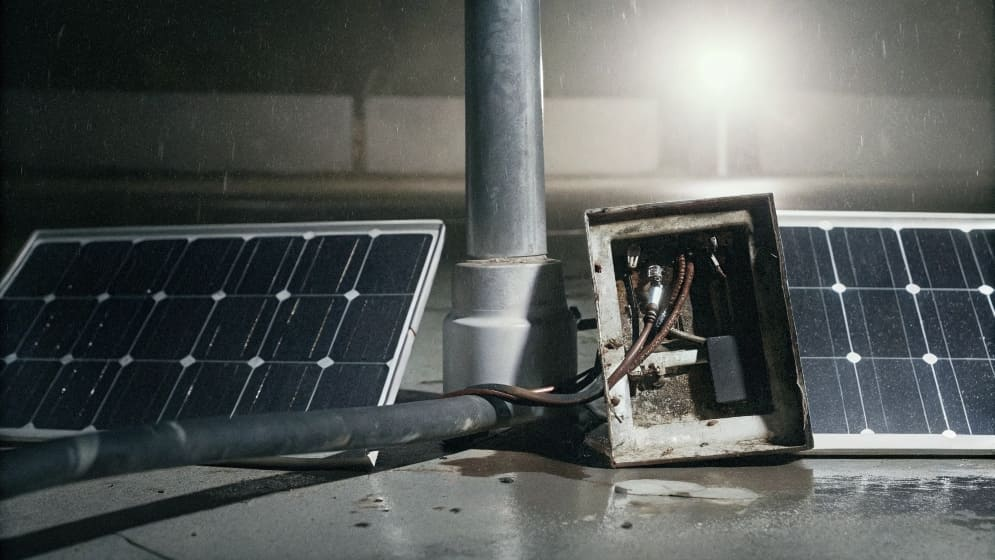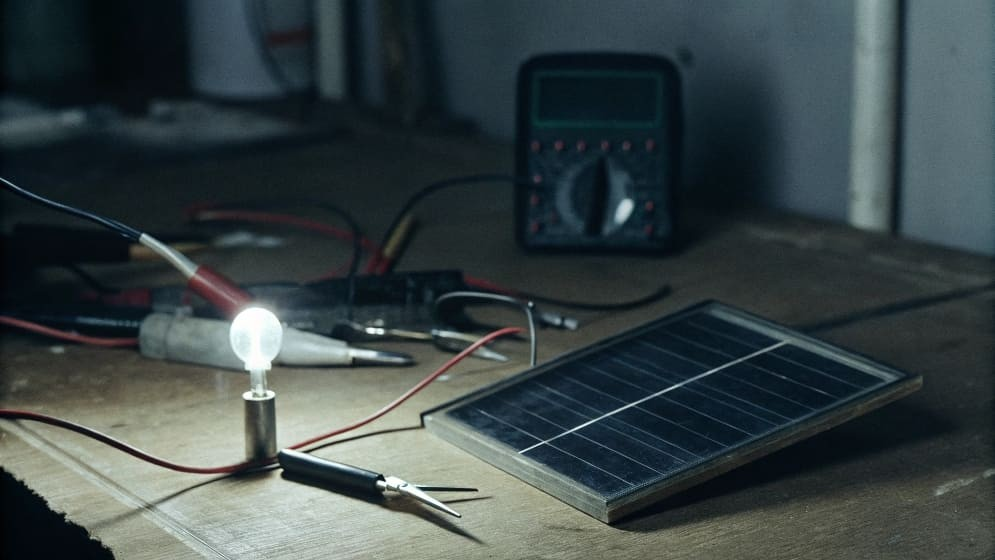Fixing Inoperative Solar LED Street Lights - A Complete Technical Guide
Solar LED street lights have become the backbone of sustainable urban development and community lighting. However, even the most advanced systems can occasionally stop working due to environmental stress, improper installation, or component degradation. Diagnosing and fixing these issues requires a clear understanding of the light’s internal architecture and how each component interacts.
A non-functional solar LED street light can compromise safety and security in public spaces. These sophisticated systems rely on the continuous operation of primary components: the solar panel, the LiFePO4 battery for energy storage, the Pro-Double MPPT solar charge controller, LED lamp for high brightness lumination and cables, connectors, and light poles for outdoor. Effective troubleshooting requires a systematic inspection of these elements, starting with the simplest and most common issues.
This guide provides a comprehensive approach to troubleshooting and repairing a solar LED street light, covering every component — from the solar panel and controller to the battery, wiring, and LED fixture.
Understanding the Solar System Composition
Before identifying problems, it’s essential to know how the system functions. A standard solar street light with the light poles for outdoor and a LiFePO4 battery includes five primary components:
Solar Panel – Converts sunlight into DC electricity.
Battery (usually LiFePO₄ or lithium-ion) – Stores power for nighttime use.
Pro-Double MPPT Solar Charge Controller – Regulates power flow between panel, battery, and LED fixture.
LED Lamp Fixture – Converts electrical energy into visible light.
Cables, Connectors, and Light Pole – Physically integrate and protect the electrical system.
Each part depends on the others; a fault in one can cause the entire unit to fail.
Component-Specific Failure Analysis and Solutions
The Solar Panel
The solar panel is the energy generator; if it fails to charge the system, the light will eventually deplete its reserve power.
| Defect Situation | Possible Cause | Troubleshooting & Solution |
| No or Low Charging Voltage | Shading or Dirt | The most common issue. Clean the solar panel surface of dust, dirt, bird droppings, or snow using a soft cloth and mild, non-abrasive detergent. Remove any tree branches, foliage, or other obstructions causing shading. Ensure the panel is correctly oriented (usually facing true south in the Northern Hemisphere) and the tilt angle is optimal for the location. |
| Physical Damage | Cracks, delamination, or burn marks from hot spots. | Visually inspect the panel for damage. If cracked, the panel must be replaced as it is no longer weatherproof and performance will be significantly reduced. |
| Wiring Fault | Loose, corroded, or disconnected cables between the panel and the solar charge controller. | Inspect all exposed wiring for cuts or corrosion. Test the solar panel voltage and current output using a multimeter during peak sunlight. If the output is low or zero despite clear conditions and no damage, the panel or its internal wiring is faulty and requires replacement. |
The LiFePO4 Battery
The battery is responsible for storing the daytime energy for nighttime use. It's often the first component to degrade, leading to short runtime or dim illumination.
| Defect Situation | Possible Cause | Troubleshooting & Solution |
| Short Lighting Time / Dim Light | End-of-Life or Degradation | Batteries have a finite cycle life. Use a multimeter to test the battery voltage after a full charge cycle. If the voltage is consistently below the manufacturer's specified cut-off point (e.g., below 11.5V for a 12V system) or it fails to hold a charge, the battery is degraded and must be replaced. |
| Deep Discharge Protection | Extended cloudy weather or insufficient charging has caused the solar charge controller to put the battery into a protective deep discharge state. | Disconnect the load (LED light) and allow the battery to charge under full sunlight for 1-2 days. Some lithium batteries may need an external power supply to be "woken up" and re-activated. |
| Corroded Terminals | Oxidation on the terminals preventing proper current flow. | Disconnect the battery (observing correct polarity). Clean the terminals and cable connectors thoroughly using a wire brush or fine-grit sandpaper. Apply dielectric grease to prevent future corrosion. |
The Pro-Double MPPT Solar Charge Controller
The solar charge controller is the "brain" of the system, regulating power flow to protect the battery from overcharging and over-discharging. A fault here can lead to complete system failure.
| Defect Situation | Possible Cause | Troubleshooting & Solution |
| Light Not Turning ON | Controller Failure (Internal Short or Water Damage) | Check the controller's indicator lights (if present). Error codes or persistent red/green lights can point to a specific fault. Inspect the controller housing for signs of water ingress, corrosion, or burnt components. If the solar panel and battery test normal, but the system doesn't activate the LED light at dusk, the controller is likely defective and requires replacement. Ensure the new controller matches the system's voltage and battery chemistry (e.g., LiFePO4). |
| Faulty Photo Sensor (Dusk-to-Dawn) | Sensor is blocked, dirty, or malfunctioning, causing the light to stay off or remain on during the day. | If the light uses the solar panel itself as the sensor, ensure it's clean and unshaded. If it's a dedicated external sensor, check its wiring and try covering it completely to simulate night. If the light doesn't respond, the sensor or the controller's sensor input is faulty. |
The LED Lamp and Wiring
The LED light is the load, and while generally reliable, faults can occur in the diode array or the driver.
| Defect Situation | Possible Cause | Troubleshooting & Solution |
| Entire Lamp Dark | Faulty LED Driver or Broken Circuit | Isolate the LED light and connect it to a known-good external power source matching its rated voltage. If the light does not illuminate, the LED lamp/driver assembly is defective. The most effective repair is often to replace the entire LED module or driver. |
| Flickering or Partially Lit | Loose Wiring or LED Chip Failure | Inspect internal wiring for loose crimps or broken solder joints on the LED printed circuit board (PCB). If only part of the LED array is dark, one or more individual LED chips or segments have failed. For high-quality commercial fixtures, replace the entire LED PCB; for basic units, the entire lamp head may need replacement. |
| Wiring Polarity Issue | Positive and negative wires reversed. | Check all connections, particularly where the LED light connects to the solar charge controller, and ensure correct polarity as indicated by the system's labeling. Reversed polarity can damage the LED light driver or the solar charge controller. |
Common Fault Scenarios and Solutions
| Problem | Likely Cause | Technical Solution |
|---|---|---|
| Light doesn’t turn on at night | Controller misconfiguration or defective sensor | Reset controller; check dusk sensor or time setting |
| Light turns on but shuts off after 1–2 hours | Insufficient battery capacity or weak solar panel | Clean panel; replace aging battery; increase PV wattage |
| Light stays dim all night | Controller in “energy-saving” mode due to low voltage | Recharge battery; increase panel size; use MPPT controller |
| Light flickers repeatedly | Faulty LED driver or loose connection | Replace driver; tighten wiring |
| No charging during daytime | Panel wiring reversed or controller input failure | Reconnect correctly; replace controller |
| Water condensation inside lamp | Poor sealing or damaged housing | Replace gasket; reseal lamp with IP66-rated enclosure |
A non-functioning solar LED street light is rarely a mystery — it’s a predictable chain reaction within the system’s power flow. By methodically analyzing each element — solar panel, controller, battery, wiring, and LED fixture — technicians can identify and fix issues quickly without unnecessary replacements.
A well-maintained solar lighting system doesn’t just restore brightness; it preserves public safety, energy savings, and the credibility of renewable technology in urban and rural infrastructure.
In short, fixing solar street lights is not guesswork — it’s about understanding the power balance, respecting environmental conditions, and ensuring every component does its job with engineering precision.
Post time: Oct-21-2025






